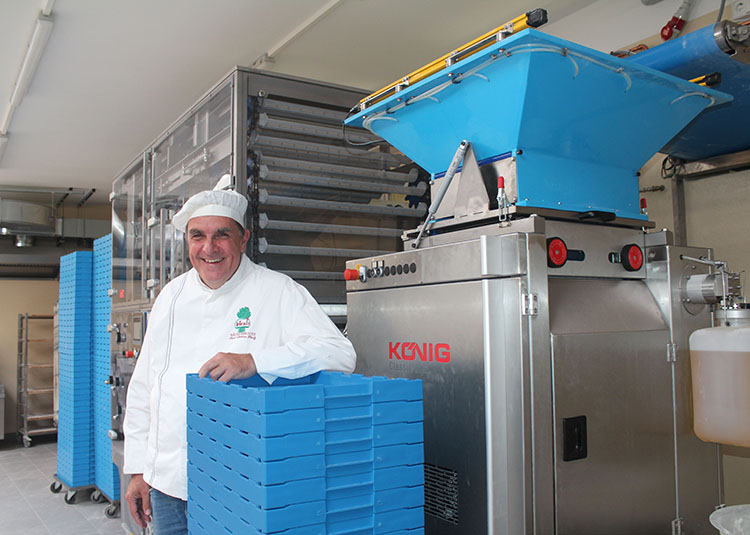
By Helga Baumfalk
More went into the decision to purchase a new bread roll line than Plentz Bakery & Confectionery had expected. Several aspects were important, including the practiced social values of the company.
With nine branches and 170 employees, Plentz Bakery & Confectionery from Schwante in Brandenburg is not a huge company, but a powerful, healthy craft business, as bakery boss Karl-Dietmar Plentz himself puts it. When the old bread roll line reached its limits, a new one was needed. “And one that suited the size of our business and our requirements.” It had to be not too big, not too small. One that is flexible and compact at the same time, that doesn’t have to deliver exorbitant output, but that can produce up to 10,000 rolls per day, and one that leaves room for growth. Plentz: “When we looked into it, we soon realized how deep an issue it is. It’s not just about a machine, but about a process that includes new refrigeration technology and new processes.” It is definitely a pioneering investment. “You don’t buy bread roll lines in a hurry.” During his market research, he came across many good solutions, but it was a visit to südback 2022 that pointed the way forward.
”Investing in a bread roll line is not just about a machine, but about a process that includes refrigeration technology and new processes.“
Karl-Dietmar Plentz, Managing Director of Plentz Bakery & Confectionery
“A line that suits us”
The new version of the Eco Twin, which bakery machine manufacturer Koenig was introducing in Stuttgart at the time, was not actually a favorite of the bakery boss. A visit to the Koenig stand changed this. “There was a stalemate between two solutions. That’s why I took the opportunity to see the Eco Twin live in operation at the social service provider Diakonie in Bielefeld. Together with our project manager, I stood in front of the machine one night and we noticed that the operator, a man with an apparent disability, was able to handle the technology. And that, I thought, was a very strong argument.”
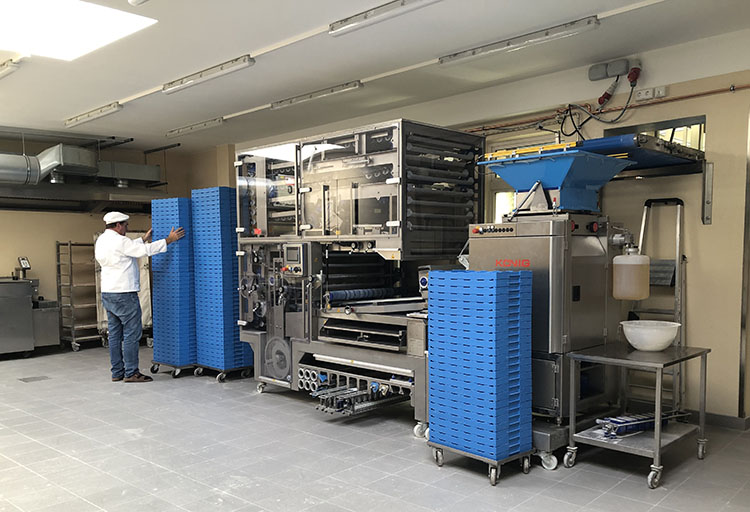
The bakery produces rolled, cut and stamped pastries on the Eco Twin bread roll machine, in the new building
In addition to the ease of operation, he was impressed by the uncomplicated changeovers and the line’s ease of cleaning. The fact that the after-sales service is guaranteed was also decisive, as was a balanced price/performance ratio. “In some details,” says the bakery boss, ”Koenig is one step ahead of others, in my opinion.” He cites the frameless doors as an example, which have the advantage that there are no corners that have to be laboriously cleaned.
The Eco Twin bread roll line
The bread roll line from Koenig is designed for artisan use. Almost all common types of bread rolls such as sliced rolls, Kaiser rolls, plaited rolls, etc. can be produced on it. For easy cleaning and maintenance, the line has been designed to ensure easy access to all modules.
Technical specifications:
+ Maximum hourly output (depending on the working width of the line): 4,200 to 6,120 pieces
+ Can be combined with various tools from the Koenig Rex series for 6-, 5- and 4-row operation with end position adjustment
+ Compact design: length: 3,770 mm, height: 2,525 mm
+ Working width: 800 mm, with direct depositing as standard for the production of dough pieces
+ Interchangeable cutting station with 3-, 4- or 5-pass guillotine; also available with 6-pass guillotine, at 800 mm working width
+ Automatic UV disinfection system for sterilizing the empty hangers before each refill
+ Adjustable depositing patterns via software, which ensures the exact positioning of the products on the most common proofing trays or baking trays
+ Dough pieces can be continuously adjusted in length and step; 800 mm working width equipped with pull-out tray as standard
+ Intuitive, freely programmable PLC control for cleaning and maintenance
+ Hangers and pressure cups can be easily removed from the system for cleaning
+ Smooth surfaces, including on the rear of the system, and large doors for viewing the production process and for better cleaning
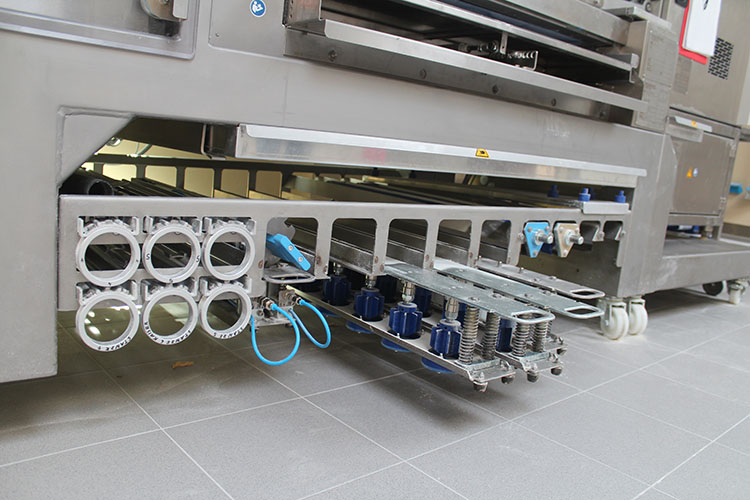
The storage system is used for various punching and forming tools
On the way to daytime work
Six days a week, for four to five hours early in the morning, the new bread roll line in the bakery in Schwante is now in operation. But, as the company’s owner believes, it isn’t running quite at the right time yet. “Because we want to be an attractive employer, our original aim was to bring production from the night into the day. We have not yet been able to flip this switch definitively, but we have at least created the technical prerequisites.”
One person is enough to operate the system. “We have given the main responsibility to a young employee who has completed his training as a baker with us. The line is now his project. That in itself was very motivating.”
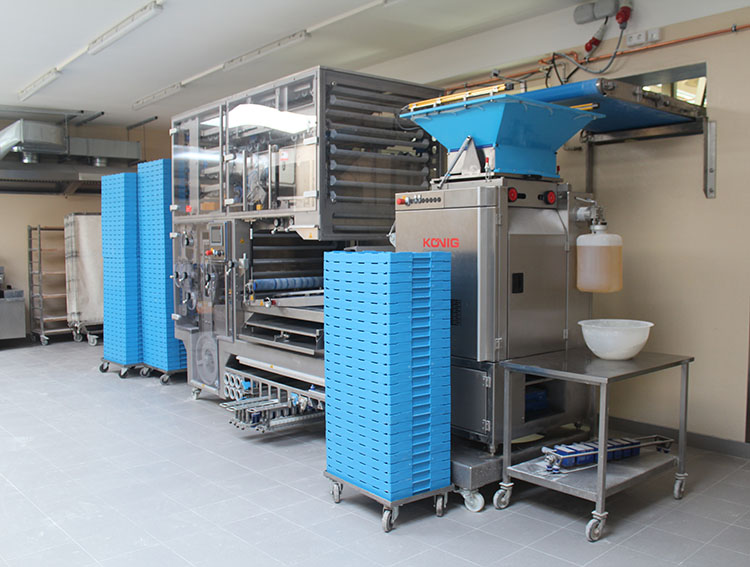
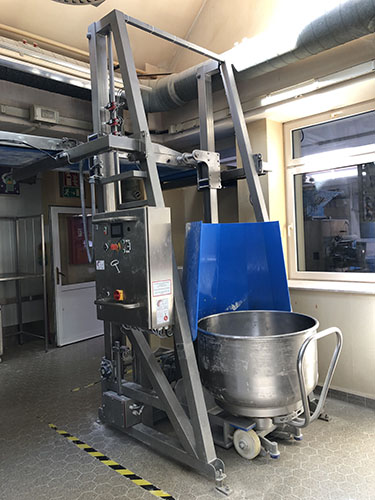
The Classic Rex line (pictured above) is fed via alifting and tilting system (pictured below)
The extension and a new lifting tipper
Before commissioning, the bakery was increased in size with a 200-square-meter extension in order to create space for the bread roll line, the handling of the peelboards, and 50 square meters of additional cooling space. A new lifting tipper was also installed. It now feeds both the bread roll line in the new building and a second dough-processing system in the existing building. This was “An important step to make our work easier,” says Plentz. Batch sizes were subsequently reduced and doughs and dough resting times were adapted to the new processes.
With more automation, consistency in dough quality is now more important. Dough temperatures are now documented and a recipe control system is being developed. “In the early days, there were quality fluctuations associated with the remaining dough. They caused a variability that could not be accounted for. But, everything has settled down now.”
Everything that is round or oblong
The bakery uses the Eco Twin line to produce all its round and oblong small baked goods, while the ‘square range’ is produced on another, semi-automatic machine. The new line processes rolled, sliced, or stamped baked goods with three stamping tools, including around six types of wheat and seeded rolls, cheese rolls, dough pieces for crumble rolls and products locally called ‘pancakes’ (Berliners).
Roll production is now more efficient and profitable again. “We are currently establishing a purely machine-produced roll as an entry-level price product that is below the level of our hand-pressed rolls.” The hand-pressed rolls for EUR 0.50 are the absolute best-sellers in the range, explains the boss. The dough is produced with equipment, but shaped by hand.
“Consistently thinking about what you want”
Depositing the dough pieces is program-controlled and runs in five rows at Plentz. “Koenig provided us with an experienced specialist to put the setting patterns in place. The specialist came to the plant initially to provide training and a second time, a month later, to make a few adjustments. On a self-critical note, we should have defined the details more precisely: “What should be put on which support, how and where?” At this point, Plentz recommends that every baker considers exactly what they want, in great detail. This makes training easier.
”Because we want to be an attractive employer, our original aim was to bring production from the night into the day. We have not yet been able to flip this switch definitively, but we have at least created the technical prerequisites.“
Karl-Dietmar Plentz, Managing Director of Plentz Bakery & Confectionery
After processing, the dough pieces are placed on peelboards, gently passed over a cooling curve – not frozen –and delivered to the stores by refrigerated truck. Sometimes they have to be re-cooked in the store. “Ideally, they are three-quarter cooked and only need to be turned and heated a little before baking.” Baked goods that are sold in smaller quantities and are therefore only baked two or three days a week (such as raisin rolls, snails, or spelt bars) are placed in the freezer and selected as required for the next day.
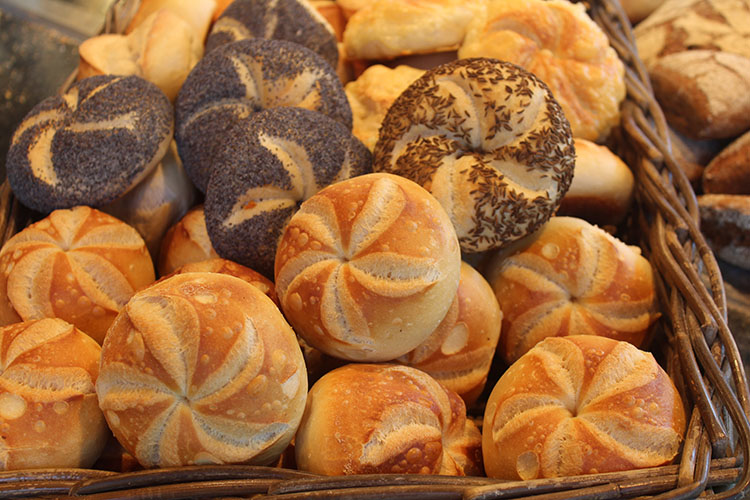
Kaiser rolls are one of the products made on the Eco Twin

The hand-pressed ones are best-sellers. The dough pieces are machine-made but shaped by hand
The potential of the Houski stamp
For the future, Plentz is thinking about the automated production of a fava bean roll and how the potential of a special stamp – the Houski stamp, which the bakery is not yet using, can be exploited. Karl-Dietmar Plentz: “The stamp creates a plait pattern. You almost think the plait is real. A high product value can therefore be achieved with a manageable amount of effort. I can well imagine the stamp being used for a high-priced, seeded pastry, perhaps for a sesame plait.”


